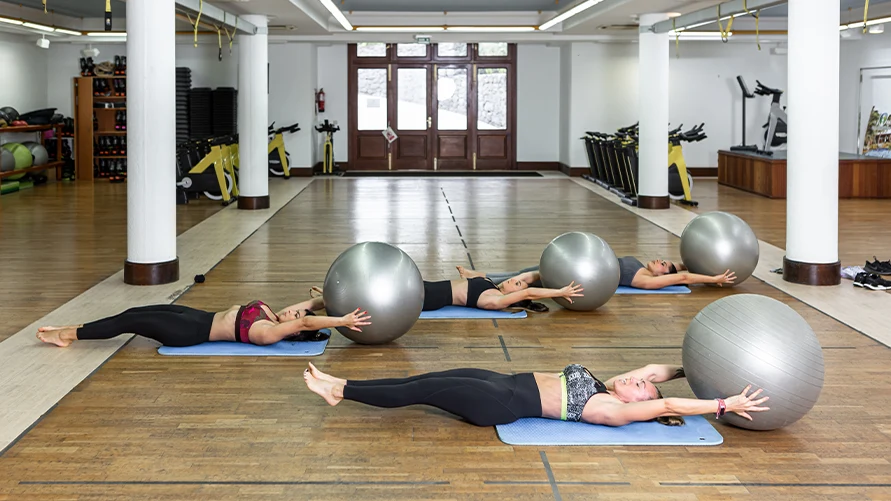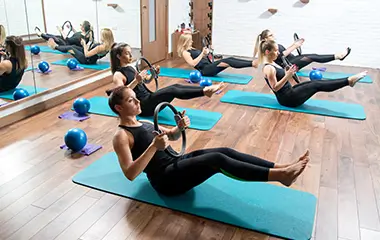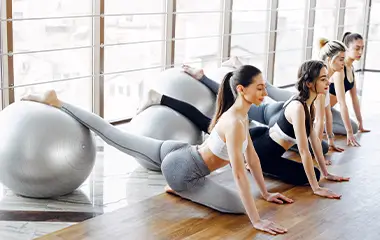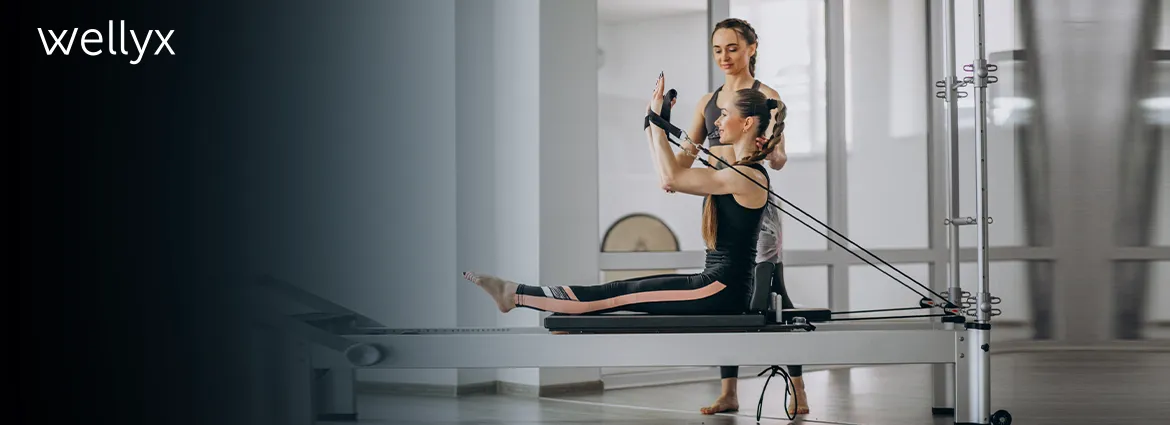Great Pilates studios are never designed randomly; they are thoughtfully created. Every line, color, and surface is a quiet negotiation between body and space. Too much energy, and you lose focus. Too little, and the room feels flat. So the art of Pilates studio interior design lies in balance; it is the same principle that anchors Pilates itself.
When light lands softly on bamboo-textured flooring or mirrors catch the warmth of a late morning sun, alignment begins before a single cue is spoken. This is what design can do: it sets the nervous system at ease so movement becomes mindful.
Now, let’s explore thoughtful Pilates studio interior design ideas that go beyond aesthetics. It’ll help you build a space that moves with purpose, calms the senses, and strengthens your brand.
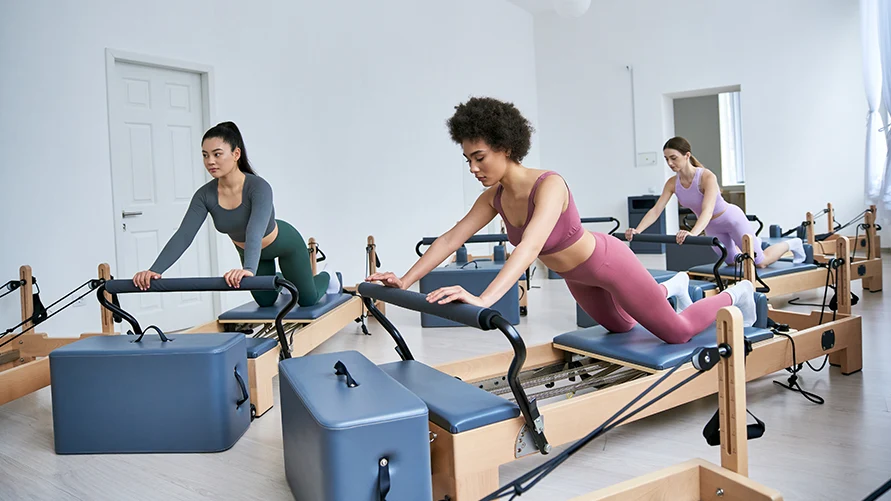
1. A layout that flows naturally
A well-planned Pilates studio layout feels intuitive. Every movement, every transition, should happen without friction. Start with flow zones:
- Reception and retail: Create a clean, welcoming entry where calm begins. Use soft lighting, uncluttered signage, and neutral materials.
- Reformer area: Maintain 4–5 feet between reformers for movement and safety.
- Mat or stretching zone: Keep walls open, with smooth flooring for bodywork.
- Storage: Built-in cabinetry keeps props visible but contained; clutter-free is key.
For smaller studios, use light tones, mirrors, and minimalist furniture to expand the space visually. For boutique studios, create subtle transitions, perhaps a seating nook or calm waiting area that deepens the sense of arrival.
Pro tip: Integrate your design with an effortless Pilates studio booking system to manage flow between classes without a mess.
2. Lighting that shapes the mood
Lighting might be the most underrated design tool in Pilates. It sets rhythm and emotion before movement begins.
- Natural light: Skylights and large windows help regulate circadian rhythm and energy.
- Soft ambient lighting: Around 300–500 lux for gentle clarity.
- Warm LED accents (2700-3000K): Under mirrors or shelves to soften edges.
- Task lighting: Adjustable fixtures above reformers and check-in areas.
According to the Illuminating Engineering Society, layered lighting design improves comfort and focus. Layered lighting allows you to shift from energizing morning sessions to calmer evening classes.
3. An aesthetic identity that reflects calm
Your Pilates studio interior design should embody the same precision and balance as the workout itself. Design directions that work timelessly:
- Scandinavian calm: White oak floors, neutral walls, black accents.
- Urban minimalist: Concrete textures, clean lines, hidden lighting.
- Coastal zen: Driftwood tones, linen fabrics, and muted blue accents.
Texture and tone matter more than ornamentation. Think bamboo-textured flooring, matte fixtures, and breathable fabrics that invite calm.
Eco-conscious choices, low-VOC paints, and recycled materials align with the wellness values of Pilates clients while enhancing brand trust.
4. The sensory layer: Feel, sound, and scent
The most memorable Pilates studio interiors engage every sense.
- Sound: Use acoustic panels to soften the echo. A balanced soundscape supports focus.
- Air: Keep the air crisp and lightly scented, lavender for evening calm, citrus for morning freshness.
- Touch: Choose tactile finishes that feel grounded underfoot and soft to the hand.
According to the Wellness Design Institute, clients are 60% more likely to renew memberships in studios that feel relaxing and clean, a reminder that comfort drives retention.
5. Design that works for your brand
Interior design is not decoration; it is a brand strategy in physical form.
Every surface and scent should echo your studio’s identity. The materials, colors, and even playlists are cues for what your brand represents: mindfulness, energy, and renewal.
If you use Wellyx’s Pilates studio management software, sync your interior design with your digital experience, matching your on-screen visuals with your physical brand palette. This consistency builds recognition and trust across every touchpoint.
6. Future-proof and trend-ready spaces
Modern Pilates studio design goes beyond the present moment. Design for flexibility, because how people train and connect keeps evolving. Emerging design trends are:
- Hybrid studios: Include a corner for streaming online classes with flattering, soft light.
- Touchless check-ins: modern, hygienic, and convenient.
- Sustainability: LED lighting, reclaimed wood, energy-efficient HVAC.
- Wellness corners: Add short recovery spaces or breathwork zones for client retention.
These forward-looking choices help your studio stay relevant, both aesthetically and operationally.
7. Quick design checklist
- Map your space flow: entry, training, recovery.
- Balance natural and artificial lighting layers.
- Choose sustainable, tactile materials.
- Keep acoustics and scent balanced.
- Reflect your brand visually and emotionally.
- Plan for hybrid and future-ready setups.
Final words
Great Pilates studio interior design ideas do more when they make a space beautiful; they make it intentional.
They shape how clients breathe, move, and feel. A well-designed studio does not need to say much; its harmony speaks for itself.
And when your designs align with your brand purpose, every visitor becomes a believer. Design the calm. Build the experience, and let your Pilates studio speak through stillness.
